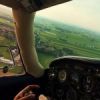-
Members Online
- Mooney squirrel
- JohnnyM
- Fly Boomer
- jamesm
- mooney_flyer
- donkaye, MCFI
- Schllc
- Jblanton
- Scott Ashton
- Jefffriday
- ccamph
- Jarerh
- pirate
- Skyland
- 1980Mooney
- FoxMike
- Sid
- Hamburglar
- TNdebdriver
- src223
- Aaviationist
- Meshach
- 47U
- MikeOH
- mariosmt
- midlifeflyer
- therodman2004
- Fritz1
- exM20K
- AndreiC
- redbaron1982
- Charles K
- Guillaume


Recommended Posts